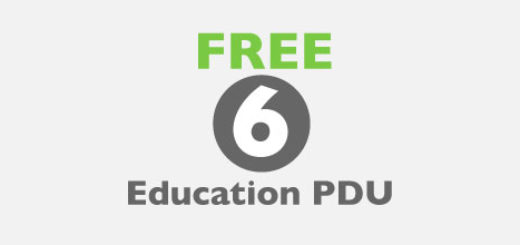PMP Certification Study Notes 7 – Project Cost Management
UPDATED for the new PMP Exam in 2023. Happy learning!
Introduction: This part of the PMP exam study notes (already updated/will be updated for new PMP Exam in 2023) is based on Section 7 of new PMBOK® Guide 6th Edition. The study notes have been rewritten to reflect the latest changes in the PMBOK® Guide for the new PMP Exam. More information on my PMP certification exam preparation can be found at my PMP exam and certification journey (with free PMP study resources and tips) here.
Please note that the study notes below is intended to include only the most important or esaily confused PMP concepts. It is by no means complete in the sense that one can rely on it to be fully prepared for the PMP Exam. Aspirants are advised to make use of this piece of study notes for revision purposes. Wish you PMP success!
Article Highlights
Project Cost Management
- important cost management/calculation terms mentioned in PMBOK® Guide:
- sunk cost (or, sunken cost) – cost already incurred in the past (i.e. already paid/marked) that cannot be recovered, though counter-intuitive project managers should not consider this in future decisions any more
- opportunity cost – the value that is given up when not choosing the next best alternative (= 100% of the value of next best alternative)
- value analysis/ engineering – cost reduction without affecting the scope
- Benefit-Cost Analysis (BCA) / Cost-Benefit Analysis (CBA) – determine feasibility, bigger benefit/cost ratio (BCR)
- Payback Period – the length of time to recover the investment
- Return on Investment (ROI) – the efficiency of investment = (Gain-Cost)/Cost
- Time Value of Money – Present Value (PV) = value / (1+interest rate)^year, Future Value (FV) = value * (1+interest rate)^year
- Net Present Value (NPV) = PV of cash inflows – PV of cash outflows (cost)
- funding for the project: self-fund, funding with equity, funding with debts
- discount rate – rate used to calculate the present value of expected yearly benefits and costs
Plan Cost Management
- Inputs: Project Charter, Project Management Plan, EEF, OPA
- Tools & Techniques: Expert Judgement, Data Analysis, Meetings
- Outputs: Cost Management Plan
- The Cost Management Plan establishes
- level of accuracy and level of precision (accuracy vs precision)
- unit of measurement
- WBS procedure links (to control account (CA))
- control threshold
- rules of earned value performance, reporting, funding and processes
- Life cycle costing = total cost of ownership: production cost, running and maintenance cost, etc.
- Data analysis techniques include:
- alternatives analysis — strategic funding options, ways to acquire project resources
Estimate Costs
- Inputs: Project Management Plan, Project Documents, EEF, OPA
- Tools & Techniques: Expert Judgement, Analogous Estimating, Parametric Estimating, Bottom-up Estimating, Three-point Estimating, Data Analysis, Project Management Information System, Decision Making
- Outputs: Cost Estimates, Basis of Estimates, Project Document Updates
- primary aims: looking for ways to reduce cost
- ask the subject matter experts (SME) (rather than the project manager) to deliver the estimates (which is much more accurate)
- cost estimate to be based on WBS
- Cost Types
- Variable costs – costs change with the amount of work, e.g. hourly consultants
- Fixed costs – costs that are constant, e.g. equipment leases
- Direct costs – directly attributed to the project
- Indirect costs – shared costs like AC, lighting, etc.
- Data Analysis Techniques
- Alternatives analysis
- Reserve analysis
- Cost of quality – cost of conformance and non-conformance
- Cost Estimate Tools
- Analogous Estimating (Top Down Estimate) — compare to a similar project in the past (an estimating heuristic/rule of thumb)
- Parametric Estimating — use a parameter and repetitive units of identical work
- Bottom-up Estimating — detailed estimates of each individual activity from historical data, more accurate and time-consuming
- Three-point Estimating — taking into accounts of the pessimistic, optimistic and most likely estimates
- Activity Cost Estimates may include indirect cost and contingency reserves
- usually to be expressed in a range of values
- Basis of Estimates – detailed analysis on how the cost estimate was derived (assumptions, constraints, possible range (+/-15%), confidence level of final estimate)
Determine Budget
- Inputs: Project Management Plan, Project Documents, Business Documents (business case, benefits management plan), Agreements, EEF, OPA
- Tools & Techniques: Expert Judgement, Cost Aggregation, Data Analysis, Historical Relationships, Funding Limit Reconciliation, Financing
- Outputs: Cost Baseline, Project Funding Requirements, Project Document Updates
- Budget is about when to spend money (than how many money to spend)
- Historical Relationships – analogous/parametric estimation
- Data Analysis => Reserve Analysis – addresses Management Reserve (unknown unknowns) and Contingency Reserve (known risks) [not included in calculation of earned value managment]
- Funding Limit Reconciliation – addresses variance between funding limit (e.g. monthly or yearly limit) and planned expenditure, may require rescheduling of work to level of the rate of expenditure
- Value Engineering – to improve quality/shorten schedule without affecting the scope
- Project Budget = Cost baseline (the approved time-phased budget) + Management Reserve
- when management reserve is used during project execution, the amount is added to the cost baseline
- S-curve: total project expenditure over project lifecycle
- Financing: acquiring funding for projects, may source from internal and/or external sources
Control Costs
- Inputs: Project Management Plan, Project Documents, Project Funding Requirements, Work Performance Data, OPA
- Tools & Techniques: Expert Judgement, Data Analysis, To-complete Performance Index, Project Management Information System
- Outputs: Work Performance Information, Cost Forecasts, Change Requests, Project Management Plan Updates, Project Document Updates
- Check against the Project Funding Requirements
- controlling costs including informing stakeholders of all approved changes and their costs
- perform Control Cost more often during execution where money is spent fastest
- Data analysis techniques:
- Earned value analysis
- Variance analysis — including schedule variance (SV), cost variance (CV), schedule performance index (SPI), and cost performance index (CPI) to check against the baseline for any variance
- Trend analysis
- Reserve analysis
- Earned Value Calculation
- Estimate at Complete:
- new estimate required (original flawed)
- no BAC variance
- CPI will continue
- sub-standard cost/schedule will continue
- TCPI (To-complete Performance Index):
- >1 not enough funding remain (over budget)
- <1 more fund available than needed (under budget)
- Estimate at Complete:
- Earned Value Accrual
- Discrete Efforts – describes activities that can be planned/measured for output, including Fixed Formula (activity given a % of budget of work package at start and earn the remaining when completed, e.g. 50/50, 20/80 or 0/100), Weighted Milestone (earn value for milestones of deliverables of the work package), Percentage Complete, Physical Measurement
- Apportioned Efforts – describes work that has a direct/supporting relationship to discrete work, e.g. testing, pm activities, calculated as % of the discrete work
- Level of Efforts (LOE) – describes activities without deliverables, e.g. troubleshooting, assigned the earned value as scheduled, without schedule variance but may have cost variance
- SPI at end of project must be 1
- SPI is NOT telling much information about whether the project is on schedule as the Critical Path must also be investigated to get a meaningful picture
Most Popular PMP Certification Exam Articles
- My Exam Prep Tips and Free Resources (I got 4P and 1 MP)
- How to Get 35 Contact Hours Fast and Easy?
- Detailed Comparision of online PMP Courses
- Over 1000+ FREE Quality Mock Exam / Practice Questions
- A FREE Guide to Formulas and Calculation (with explanation and sample questions)
- 47 Commonly Confused Terms with detailed explanation





 Hi, my name is Edward Chung, PMP, PMI-ACP®, ITIL® Foundation. Like most of us, I am a working professional pursuing career advancements through Certifications. As I am having a full-time job and a family with 3 kids, I need to pursue professional certifications in the most effective way (i.e. with the least amount of time). I share my exam tips here in the hope of helping fellow Certification aspirants!
Hi, my name is Edward Chung, PMP, PMI-ACP®, ITIL® Foundation. Like most of us, I am a working professional pursuing career advancements through Certifications. As I am having a full-time job and a family with 3 kids, I need to pursue professional certifications in the most effective way (i.e. with the least amount of time). I share my exam tips here in the hope of helping fellow Certification aspirants!






Please check the Time value formulas.
I think that the term (1+interest rate) shall be to the power of years and NOT to multiplied by the years
i.e. PV = Value / (1+interest Rate)^Years, and FV = Value * (1+interest Rate)^Years
Yes, you are right. I have just corrected it. Thanks!
Hi Edward,
thank you for your materials. Using it in reviewing my own studies and finding points I have not considered in my own preparation.
I have one remark:
“opportunity cost – difference in value between one path vs alternative (= 100% of the value of next best alternative)”
I find it a little bit missleading that you write about the difference in value between alternatives. If I have two projects, one with a value of 10.000 and another one with 7.000, the difference would be 10.000-7.000=3.000. But in fact the opportunity costs are 7.000, because it is just the value of the second best alternative (like you write in the second part with the 100%).
Hi Christian,
Yes, you are right! Thanks for pointing out my mistake.
Wish you PMP success!
Are we able to print out these notes ?
Sure, just highlight the parts you would like to be printed and click the print icon/menu item, be sure to set “selection only” as the print area.
Wish you PMP success!
what is the difference between Parametric Estimate vs. Bottom-Up Estimate? Can you please provide real life examples to clearly differentiate the two? They sound the same to me. Thanks
Parametric Estimate is to estimate the work based on unit time/cost while bottom-up estimate is to ask the people who will eventually handle the work to give a more accurate estimate of the time/cost involved.
Of all estimation methods, the bottom-up estimate is the most time consuming but most accurate. Hope this helps.
Wish you PMP success!
Excellent !!… You just made it like a cake walk for me……
Thanks for your encouragement. Wish you PMP success!
I need PMI Equations questions( a lot of them) not just the formulas, do you have anything like that so that I can practice practice and practice some more on the equations or cost section. Thanks!
Hi Marguerite,
Have you tried this one:
https://edward-designer.com/web/pmp-evm-sample-questions/
Hope this will be useful for you. Wish you PMP success!
Hi Edward,
Thanks for your website. It’s very convenient. How many hours have you spent studying in total ? split between reading the book and also doing your mock test.. how many questions you say in total you did and how many hours ?
Thanks.
I spent around 180 hours in total for my PMP Exam preparation. About 1/2 of it for reading / going through PM PrepCast and the other half for attempting mock exams.
Hi,
Edward , I found your site very useful….please can you explain me LOE, discrete and apportioned efforts – not able to understand the concept.
Hope my other article will be useful to you:
https://edward-designer.com/web/discrete-effort-vs-apportioned-effort-vs-level-of-effort-for-pmp-exam/